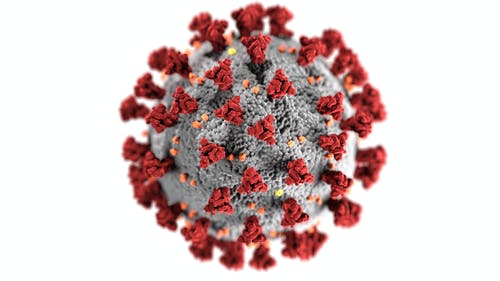Once again, scientists in China have discovered a new virus that could potentially trigger an even deadlier pandemic. Because it seems that there are a lot of viruses that are similar to each other, especially in Southeast Asia. A virus that has now been found is similar to the current corona virus, for example.
virologist Chris van Tulleken recently warned of further pandemics in the BBC Radio 4 program “Today”. According to the virologist, it cannot be ruled out that these could be even more deadly than the current corona pandemic. “It’s not a question of whether the next virus pandemic will start, but when,” says the virologist pessimistically. “And it’s certainly possible to envision a pandemic that, in some ways, will be far more severe than our current experience,” warns the scientist. It remains to be hoped that the scientist’s prognosis will not be confirmed too quickly.
Origin of the pandemic? Researchers find the most closely related coronaviruses to date in bats
A French research team has discovered viruses from bats in Laos, the genome of which corresponds to almost 97 percent with that of the pandemic pathogen SARS-CoV-2. These viruses can even infect human cells.
New scientific data provide another building block for solving the mystery of where the corona pandemic virus SARS-CoV-2 came from. A team of researchers led by Marc Eloit from the Pateur Institute in Paris found three closely related virus types in bats in Laos. As the scientists now write in their study published in Nature , they took samples of saliva, faeces and urine from 645 bats in northern Laos. In three species of horseshoe bats, they found viruses whose genome matched more than 95 percent with SARS-CoV-2. The data has not yet been reviewed by independent researchers.
Dangerous receptor-binding domain discovered in bat corona viruses
The three virus types now carry the designations BANAL-52, -103 and -236. BANAL-52 shares 96.8 percent of its genome with SARS-CoV-2. The researchers were particularly amazed by the similarity of the so-called receptor-binding domains (RBD). This is the area that allows SARS-CoV-2 to attach to human ACE-2 receptors and then enter the cell. In fact, the scientists even managed to infect human cells with the bat corona virus. Further experiments in animal models should now show how dangerous these SARS-CoV-2 relatives can become.
When SARS-CoV-2 was first described, researchers were amazed at its receptor-binding domain. Since this had never been seen before in a virus, the hypothesis arose that the virus might have been grown in a laboratory . “But the coronaviruses found in Laos now show that such receptor-binding domains do occur in nature,” Australian virologist Edward Holmes told nature magazine .
Still unclear: where did the furin cleavage site come from?
Previous studies had already discovered close relatives of SARS-CoV-2 in Thailand, Cambodia and southern China. Through them and the new findings, it is becoming increasingly clear that the region is a hotspot for viruses such as SARS-CoV-2. As early as 2020, scientists in the Chinese province of Yunnan had discovered the RaTG13 virus, whose genome matches 96.1 percent with SARS-2.
However, some questions about the origin of the pandemic pathogen remain unanswered. So it is still unclear where the furin cleavage site that helps the virus to infect human cells comes from. None of the direct relatives found so far has this cleavage site. It is also unclear how the virus got onto the markets in the central Chinese metropolis of Wuhan, where the first infections happened and whether there were intermediate hosts, such as raccoon dogs. Here, however, further samples from bats and raccoon dogs could bring answers. According to nature, several other research teams are already collecting data to answer these questions.






Leave a Reply